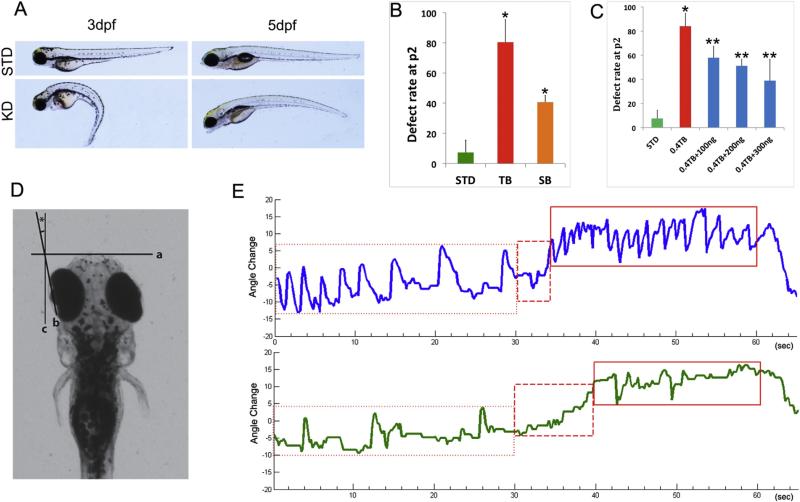Fig. 3.
Knockdown of poc1b causes visual impairment in zebrafish. (A) Representative lateral view of 3 and 5 dpf larvae injected with poc1b morpholino. (B) The phenotypic defect rates of zebrafish injected with TB-MO (n = 153) and SB-MO (n = 40) were calculated at 2 dpf. The abnormality rate is more than 80% in the embryos injected with TB-MO, which is significantly higher than that in the controls (n = 253) (p < 0.01). Reproducibly phenotypic defects in morphants injected with SB-MO was also significantly increased (p < 0.05), but with less severity. (C) The defect rates were rescued when co-injected with indicated dose of wild-type mRNA (100, 200 or 300 ng/embryo), in poc1b TB morphants (n = 3) as marked (**p < 0.05). (D) Schematic diagram of eye movement measurement. Two points in the zebrafish larvae eye creates an axis line (b) that can decide the angle of eye movement. (E) An example of the OKR responses from poc1b morphants (green) and their STD control fish (blue) were displayed.

